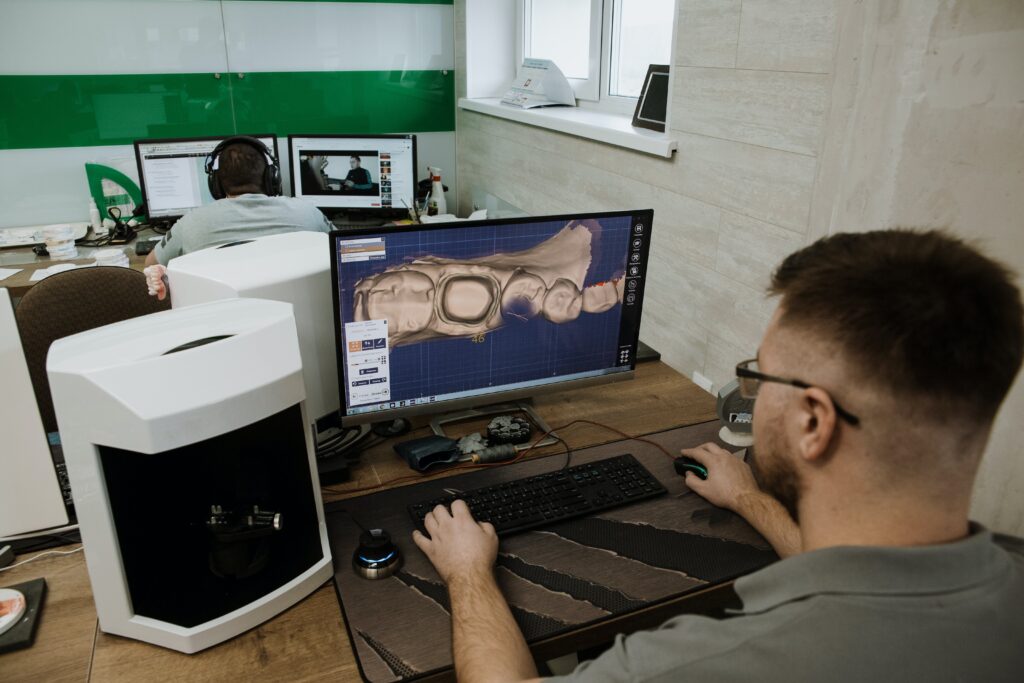Ways to Use 3D Product Modeling Assistance to Enhance Your Visual Marketing
Introduction
In today’s competitive market, visual marketing plays a crucial role in attracting and engaging potential customers. One of the most effective tools in this regard is 3D product modeling. This cutting-edge technology allows businesses to create lifelike representations of their products, providing customers with a more immersive and interactive experience. In this article, we’ll explore various ways in which you can leverage 3D product modeling to enhance your visual marketing efforts.
Showcasing Product Features
When it comes to marketing, the devil is in the details. With 3D product modeling, you have the power to highlight every intricate feature of your product. Whether it’s the stitching on a piece of clothing or the fine print on packaging, this technology allows customers to get up close and personal with your offerings.
Highlighting Details
In a physical store, customers can pick up and examine a product. 3D modeling replicates this experience online, allowing users to zoom in, rotate, and explore every nook and cranny. This level of detail instills confidence in potential buyers, as they can thoroughly assess the product before making a purchase.
Exploring Functionality
For products with moving parts or specific functions, 3D modeling can demonstrate how they work. This is particularly valuable for items like electronics, machinery, or furniture. Customers can interact with a virtual representation, gaining a clear understanding of the product’s capabilities.
Creating Engaging Product Displays
Static images can only convey so much. With 3D modeling, you have the ability to create dynamic, eye-catching displays that capture attention and hold it.
Dynamic Presentations
Imagine a clothing line where each item is showcased in a virtual fashion show. With 3D modeling, this becomes a reality. Products can be presented in motion, allowing customers to see how they move and flow, providing a much richer shopping experience.
Interactive Demonstrations
For products that require assembly or have multiple functions, interactive demonstrations are invaluable. 3D modeling enables users to engage with the product virtually, guiding them through the steps or showcasing its various modes of operation.
Personalizing Customer Experience
Customers appreciate options, and 3D modeling can facilitate a level of personalization that goes beyond what traditional images can offer.
Customizable Options
Allowing customers to customize their product creates a sense of ownership and attachment. With 3D modeling, you can offer a virtual customization experience, letting customers choose colors, patterns, and other features to tailor the product to their preferences.
Virtual Try-Ons
In industries like fashion or cosmetics, the ability to try before you buy is a game-changer. 3D modeling combined with augmented reality technology allows customers to virtually try on clothing, accessories, or makeup, providing a highly engaging and convenient shopping experience.
Boosting E-commerce Sales
One of the ultimate goals of visual marketing is to drive sales, and 3D product modeling excels in this regard.
Reducing Return Rates
One of the biggest challenges in e-commerce is managing return rates. Often, customers receive a product that doesn’t match their expectations. With 3D modeling, the gap between online representation and reality is significantly narrowed, leading to fewer disappointments and returns.
Increasing Conversion Rates
When customers can interact with a product in 3D, they’re more likely to convert. Studies have shown that interactive product experiences lead to higher conversion rates, making 3D modeling a powerful tool for boosting sales.
Enhancing Marketing Materials
Incorporating 3D product models into your marketing materials can elevate your brand and captivate your audience.
Stunning Visuals for Ad Campaigns
Whether it’s for print, digital, or social media, 3D product models add a level of sophistication and visual appeal that traditional images simply can’t match. They grab attention, convey professionalism, and leave a lasting impression.
Captivating Website Content
Your website is often the first point of contact with potential customers. By integrating 3D models, you create an engaging and memorable experience that sets you apart from competitors. It’s a powerful way to showcase your products in the best possible light.
Standing Out on Social Media
In a crowded social media landscape, it’s essential to stand out. 3D product modeling provides a unique and interactive way to capture your audience’s attention.
Immersive Posts and Stories
With the ability to embed 3D models directly into posts and stories, you can create a highly engaging experience for your followers. They can interact with the product right within their social media feed, increasing the likelihood of them exploring further or making a purchase.
Interactive Advertisements
For paid advertising campaigns, 3D product models are a game-changer. They draw the viewer in, encouraging interaction and exploration. This leads to higher click-through rates and a greater return on ad spend.
Streamlining Prototyping and Design
For businesses involved in product development, 3D modeling is an invaluable tool that can streamline the design process and save both time and resources.
Rapid Iterations
Traditional prototyping and design iterations can be time-consuming and costly. With 3D modeling, you can quickly create and modify virtual prototypes, allowing for faster development cycles and more efficient product refinement.
Cost-Effective Development
By catching design flaws or issues early in the virtual stage, you can avoid costly mistakes in physical production. This not only saves money but also ensures a higher quality end product.
Collaboration and Communication
Clear communication is crucial in any business. 3D product modeling facilitates effective communication with both clients and internal teams.
Effective Client Presentations
When presenting a product concept to a client, a 3D model provides a much clearer representation than sketches or 2D renderings. It allows clients to fully visualize the end product, leading to more informed decisions and fewer misunderstandings.
Clearer Team Communication
Within your own team, 3D models serve as a universal language. They provide a tangible reference point that everyone can understand, ensuring that everyone is on the same page and working towards the same vision.
Expanding Market Reach
In today’s global economy, reaching a diverse audience is paramount. 3D product modeling can help you bridge language and cultural barriers.
Language and Cultural Adaptation
A visual representation transcends language. By showcasing your products in 3D, you can appeal to a broader international audience, regardless of linguistic differences.
Global Product Launches
When introducing a product to a new market, 3D modeling allows for a seamless and impactful launch. It provides a universally understandable presentation that resonates with audiences worldwide.
Building Trust and Credibility
Transparency and authenticity are key in building trust with your audience. 3D product modeling allows you to showcase your products in a way that leaves no room for doubt.
Transparency in Product Representation
With 3D models, what you see is what you get. There’s no room for misinterpretation or hidden surprises. This level of transparency instills confidence in your customers, leading to stronger brand loyalty.
Demonstrating Quality and Craftsmanship
For products that pride themselves on quality and craftsmanship, 3D modeling is a powerful tool. It allows you to showcase the precision and attention to detail that sets your offerings apart from the competition.
Staying Ahead of the Competition
In a rapidly evolving market, staying ahead of the curve is crucial. 3D product modeling demonstrates a commitment to innovation and sets a new standard for product presentation.
Innovation in Product Presentation
By adopting 3D modeling, you position your brand as forward-thinking and tech-savvy. This sends a powerful message to your audience that you’re invested in providing the best possible experience.
Setting New Industry Standards
In industries where visual representation is paramount, being a pioneer in 3D modeling sets you apart as a leader. It establishes a new standard of excellence that competitors will strive to match.
Measuring Impact and Engagement
Understanding how your audience interacts with your products is essential for refining your marketing strategy. 3D product modeling provides valuable insights.
Analyzing User Interaction
With 3D models, you can track how users engage with your products. This data offers valuable insights into which features or aspects of the product are most appealing to your audience.
Gathering Customer Feedback
Interactive 3D experiences can also be a platform for gathering feedback. Customers can provide comments or suggestions based on their virtual interactions, giving you direct insights into their preferences and needs.
Integrating with AR and VR Technologies
The future of marketing lies in augmented and virtual reality. 3D product modeling sets the foundation for seamless integration with these emerging technologies.
Augmented Reality Experiences
By starting with 3D models, you’re already on the path to creating compelling augmented reality experiences. Customers can use their devices to place virtual versions of your products in their real-world environment.
Virtual Reality Showrooms
For industries like real estate or interior design, virtual reality showrooms offer a powerful tool for showcasing products in a realistic setting. 3D modeling provides the foundation for creating these immersive experiences.
Future Trends and Developments in 3D Product Modeling
As technology continues to advance, so too will the capabilities of 3D product modeling.
AI-Powered Enhancements
Artificial intelligence is poised to revolutionize 3D modeling. AI algorithms will enable even more realistic and dynamic representations, further blurring the line between virtual and reality.
Hyper-Realistic Simulations
The future of 3D modeling holds the promise of hyper-realistic simulations. Imagine a world where virtual products are indistinguishable from their physical counterparts. This level of realism will redefine the way we shop and interact with products online.
Conclusion
Incorporating 3D product modeling into your visual marketing strategy opens up a world of possibilities. From showcasing intricate details to creating engaging displays and personalizing customer experiences, the benefits are boundless. By staying ahead of industry trends and leveraging emerging technologies like AR and VR, you can position your brand as a leader in visual marketing.
FAQs
1. How can I get started with 3D product modeling for my business?
Getting started with 3D product modeling involves finding a reputable provider or in-house team with expertise in the field. They will guide you through the process of creating realistic representations of your products.
2. What industries can benefit the most from 3D product modeling?
While 3D product modeling has applications across various industries, it is particularly beneficial for e-commerce, fashion, furniture, electronics, and real estate.
3. Will implementing 3D product modeling require a significant investment?
The initial investment in 3D product modeling may vary depending on the complexity of your products and the level of detail required. However, the long-term benefits, including increased sales and reduced return rates, often outweigh the initial cost.
4. How can I measure the impact of 3D product modeling on my marketing efforts?
You can measure the impact of 3D product modeling through analytics tools that track user interaction with your 3D models. This data will provide insights into customer engagement and preferences.
5. What are some emerging trends in 3D product modeling?
Emerging trends in 3D product modeling include the integration of artificial intelligence for more realistic representations and the development of hyper-realistic simulations that blur the line between virtual and physical products.


